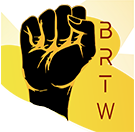Let’s have an honest conversation about Nat Turner. Is he a religious zealot or serial killer? The State of Virginia described a crazed drapetomaniac. Some historians wonder if he was a patsy. Many of us recognize him as a revolutionary. Whether he’s praised, denigrated, or questioned, this controversial figure has become a staple of the conversation addressing race, injustice, and revolution.
Revolution in 19th Century Virginia
Nat Turner was born into slavery in Southampton County, Virginia, in 1800. Like much of the slaveholding southern states at the time, the enslaved Black population outnumbered the white population. Slavery in Virginia began as early as 1619, and the state had developed an economy around tobacco exports. Tobacco demand grew steadily in Europe, and the process of growing, preparing, and shipping it was labor intensive. White slave owners responded to the economy by breeding and importing more slaves.
Just months before Nat Turner’s birth, an attempted slave rebellion began to shift white Virginia’s relationship with free and enslaved people of color. Gabriel, a literate blacksmith enslaved on the Prosser Plantation, planned a rebellion. Local slaveholders estimated that his conspirators numbered in the hundreds. While armed forces quelled rebellion before it could begin, it had the potential for wide-reaching consequences.
Nat Turner: A Brief History
Gabriel’s intellect, literacy, and skills allowed him to move around and share information widely as he loaned his labor to other plantations. While Gabriel, his two brothers, and at least 20 other enslaved Black people were executed for the attempt, this did not completely allay the fears surrounding the event. As smaller attempts at rebellion and more rumors of revolt followed, the state responded by restricting enslaved people’s already limited liberties. By the time Nat Turner was 10 years old, the State of Virginia forbad him education (including literacy), mobility, or any contact with free people of color. In fact, the State of Virginia issued legislation forbidding free people of color from residing in the state, else they would face enslavement.
Nonetheless, Nat Turner learned to read and write. Described as very intelligent and deeply religion, he would often lead Baptist church services, preaching the Bible to the other enslaved Black people. As he gained followers, his reputation as a principled religious leader even attracted the occasional white follower.
Religion and Rebellion
Although Nat Turner was reportedly very religious and, in fact, a charismatic leader, it does become difficult to parse the whole truth from legend, myth, and outright racism. He was credited with religious visions that directed him to begin the rebellion. Unfortunately, most of what we now know about Nat Turner’s rebellion comes from his confession, which Thomas Ruffin Gray published with other “research” as, The Confessions of Nat Turner.
The rebellion began as an inspired agreement with four other enslaved men. Quiet and effective communication was key, and over time, their ranks would include more than 70 conspirators. In August of 1831, they would begin traveling from house to house and quietly executing slave holding whites and freeing enslaved Blacks. The group of freedom fighters didn’t discriminate by age or gender. In addition to white men, they also targeted white women and children. They did, however, spare a few poor white people. Nat Turner reasoned that they ‘thought no better of themselves than they did of negros.’
Within two days, the State of Virginia suppressed the rebellion, but Nat Turner remained in hiding throughout October. While more than 60 people died during the rebellion, Nat Turner confessed to killing only one, Margaret Whitehead.
The Aftermath
50 Black people, were tried for participating in the rebellion, 5 of whom were free people of color. 19 were acquitted, 19 were executed, and 12 were sold. The state went on to execute at least 36 other Black people in response to the rebellion. White militias raged throughout Virginia, murdering at least 200. Many white politicians doubled down on their pro-slavery stance following the revolt. Slaveholders made an effort to portray slavery as both an economic good and an attempt to civilize Black people- rather than rob them of their implicit humanity. The State of Virginia executed Nat Turner and horribly mutilated his body after death. They advertised the desecration and denied him burial in, perhaps, the most graphic effort to prevent additional revolts.
In the 186 years that followed Nat Turner’s death, historians passionately debate his actions and motives. Did he really only kill one person? Was he mentally ill? What were the visions? Did he really think God directed him to lead a rebellion? Was he really the leader of this rebellion? And so on, ad infinitum. Despite the near-universal modern disgust with American slavery, many people still actively deride Nat Turner. I want to take the opportunity to honor Nat Turner or, at the very least, the idea of him. Thomas Ruffin Gray took agency over Nat Turner’s story capitalized upon it. We have legends of a man, his relationship with God, and his struggle to fight for freedom. Nonetheless, the idea of such a brazen attempt at revolutionary justice inspires deep consideration and, hopefully, the revolutionary spirit and yearning for justice inside us all.
Heather Harvey,
Co-Founder


